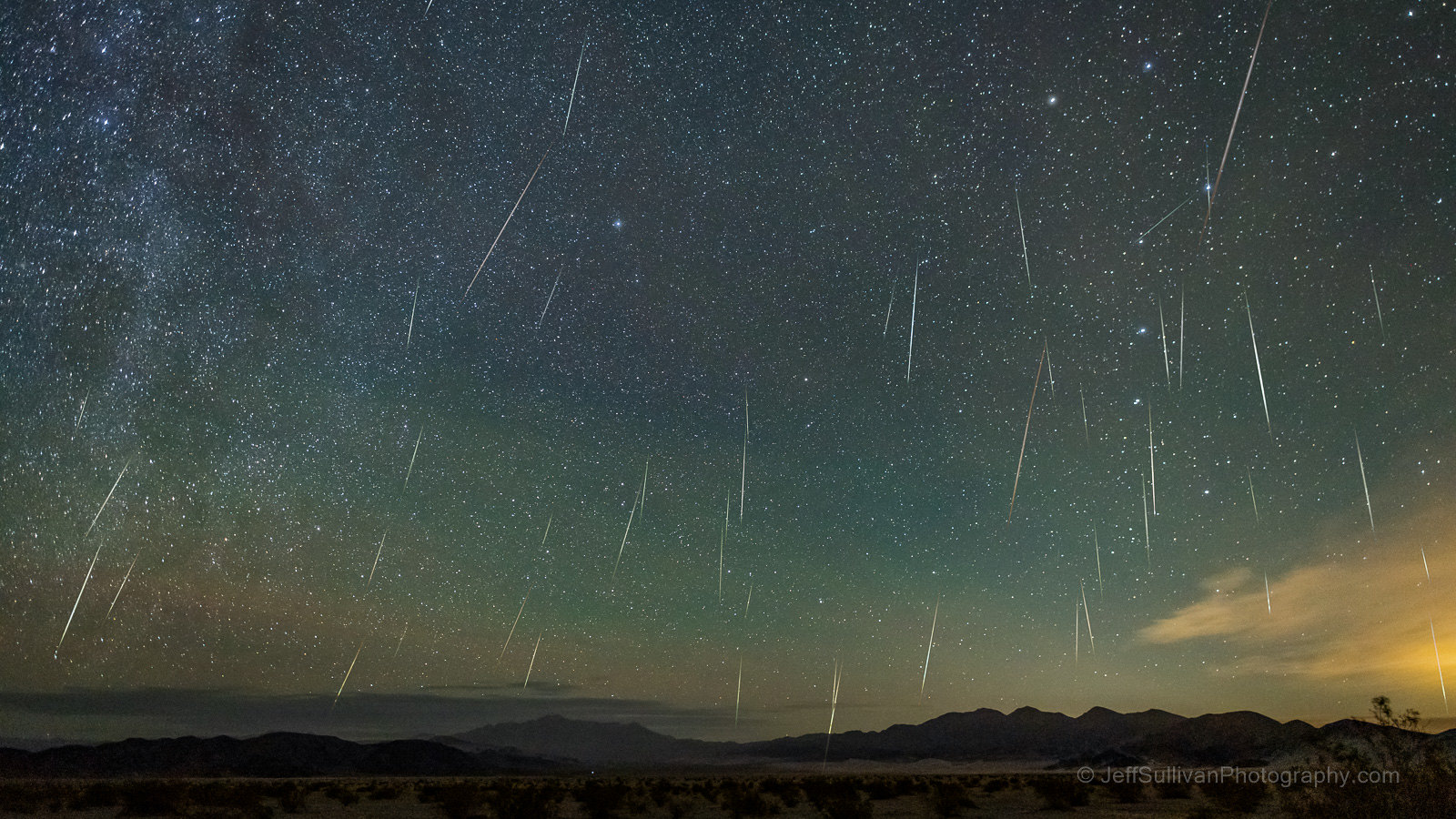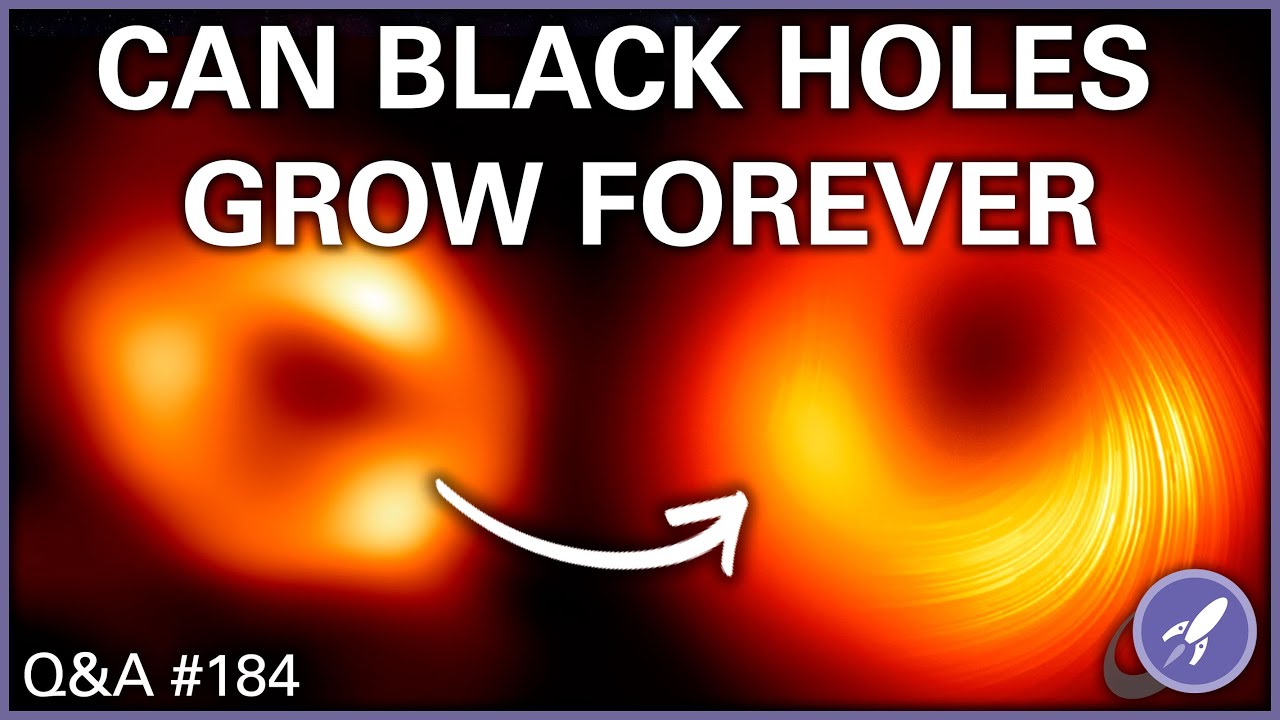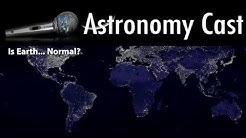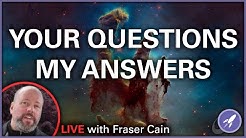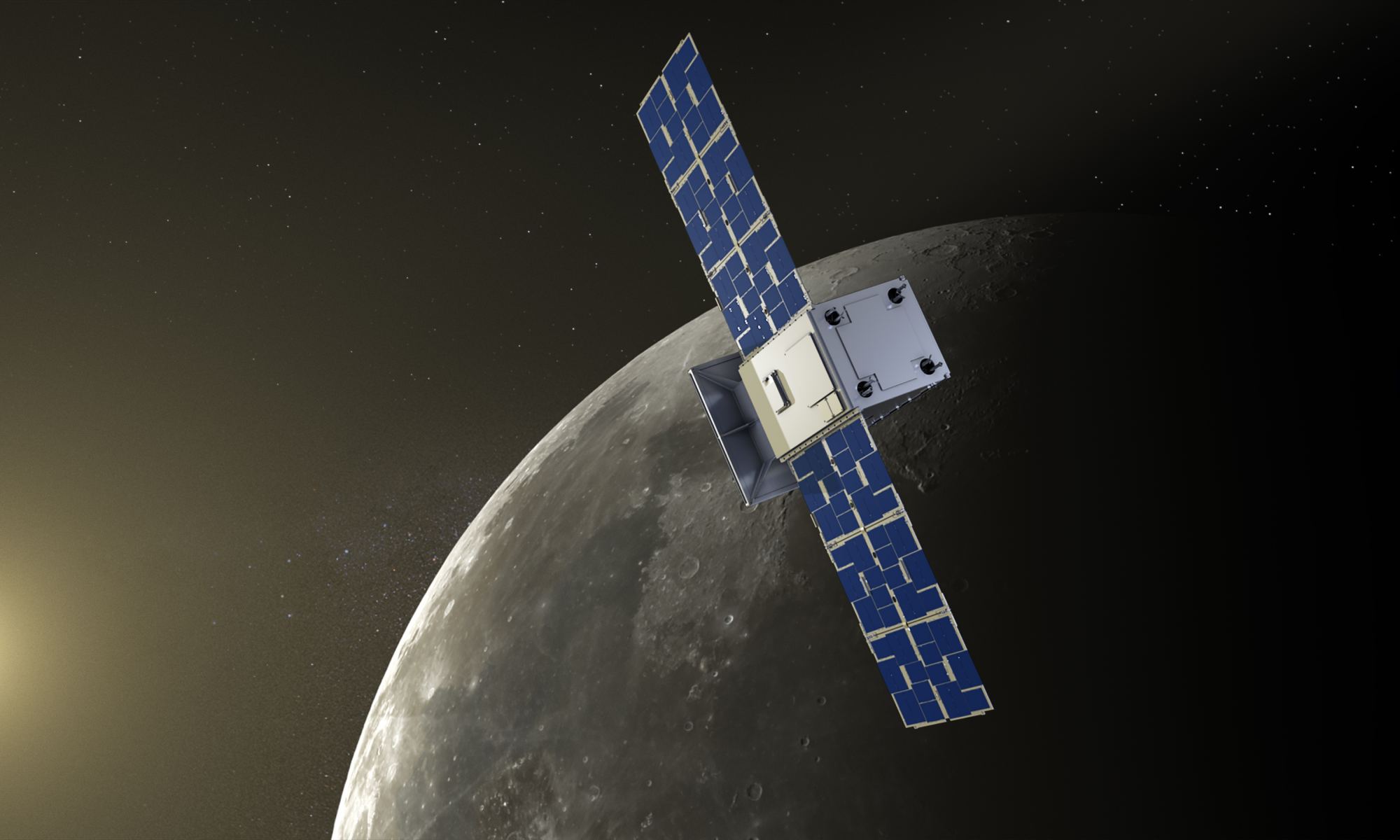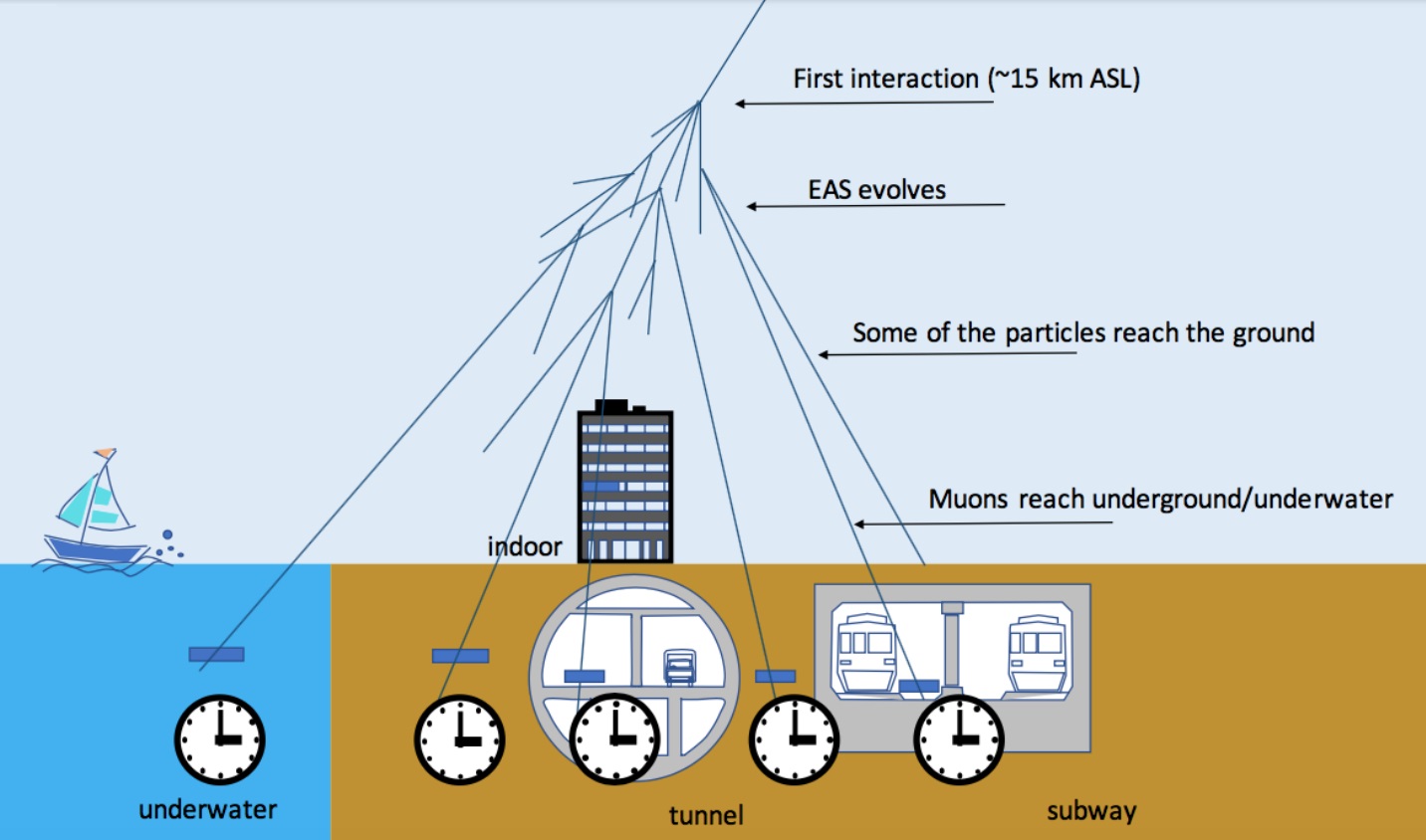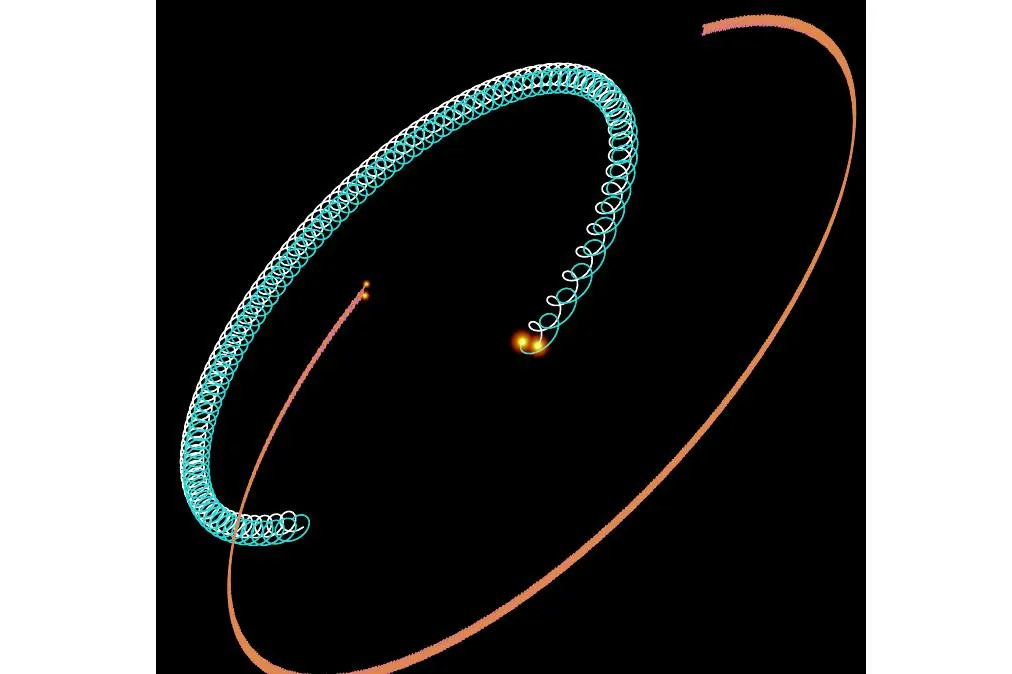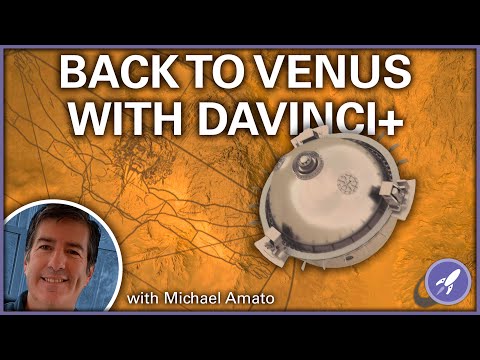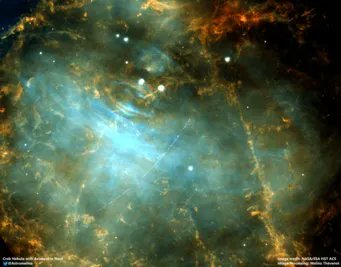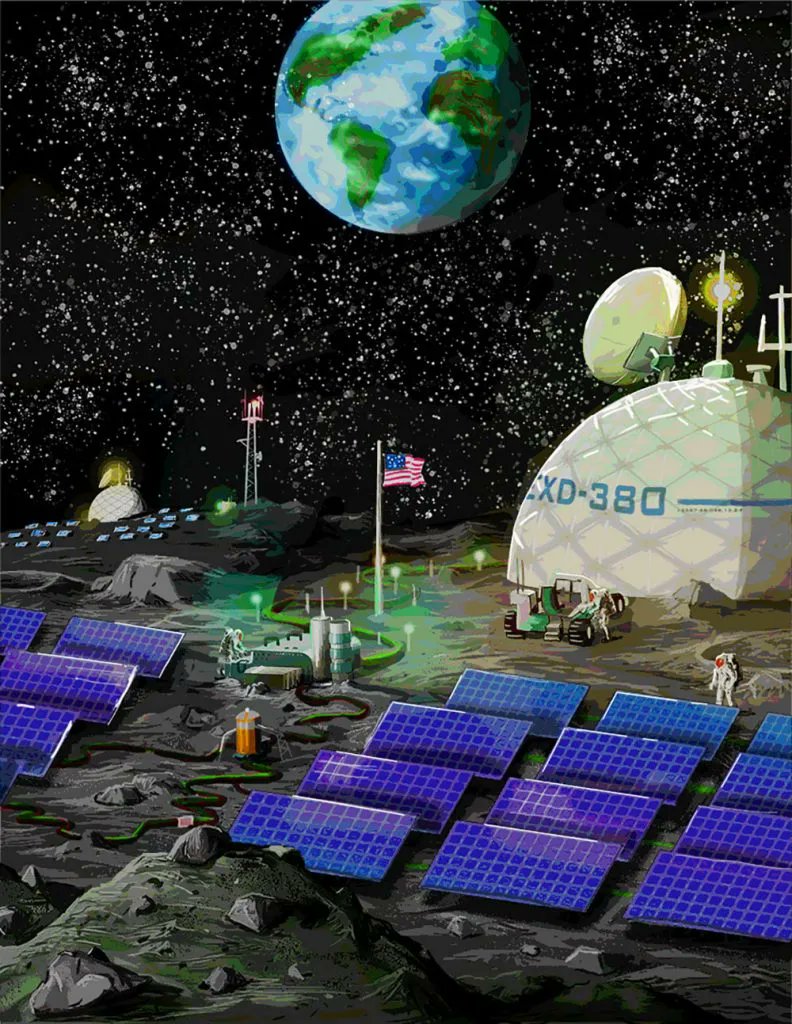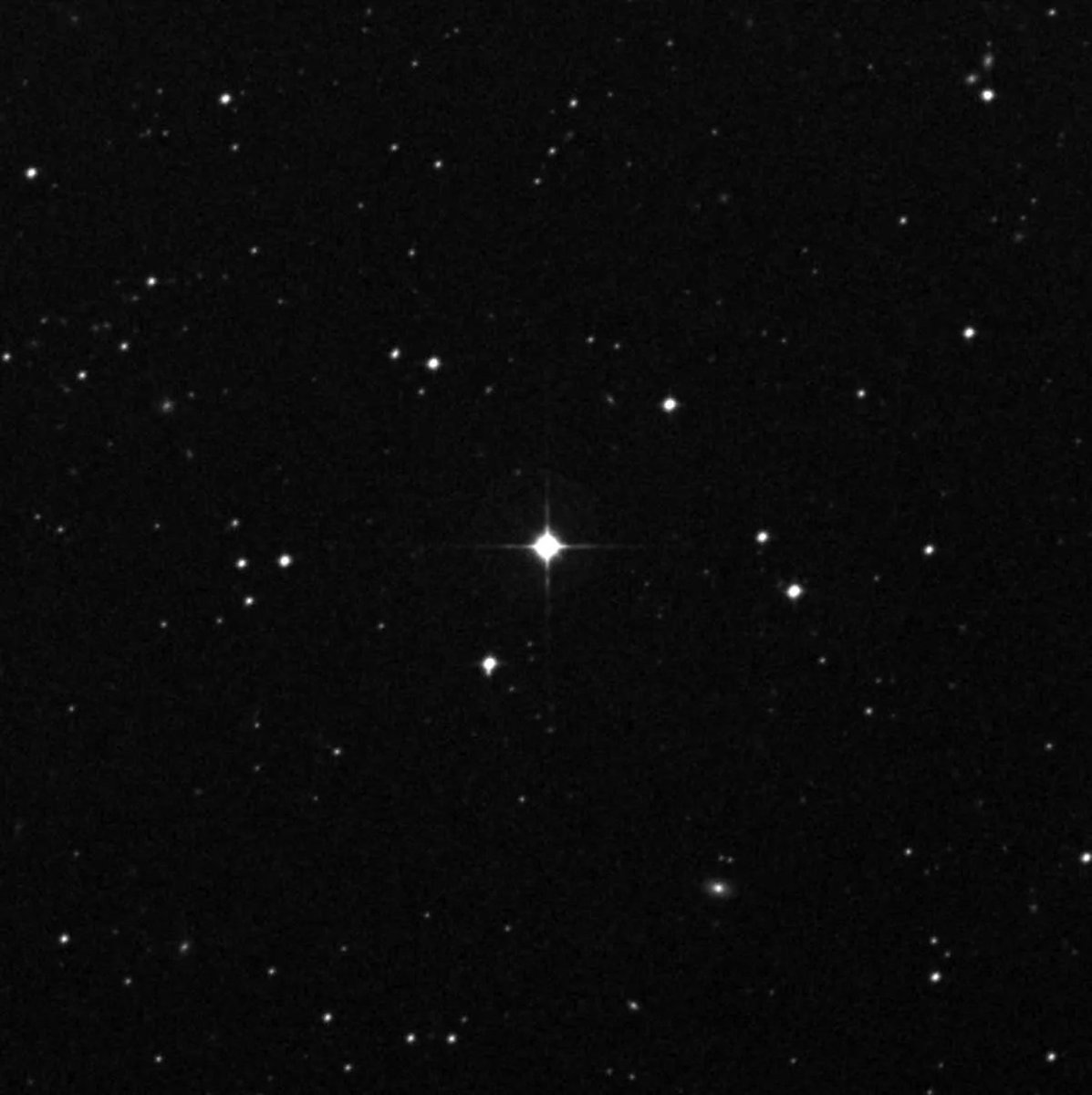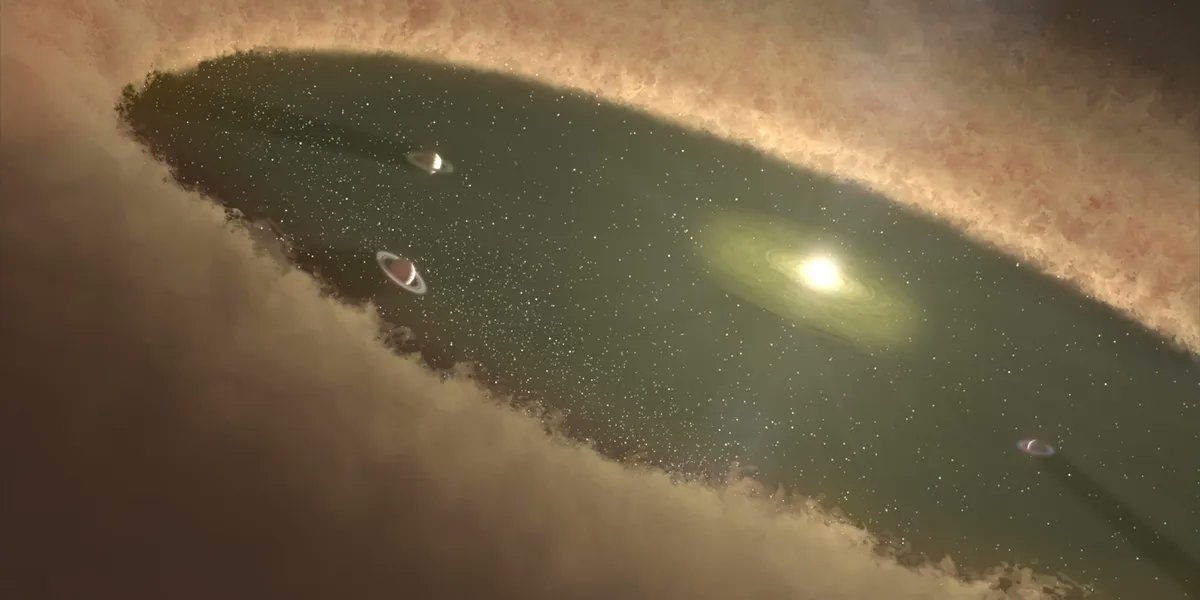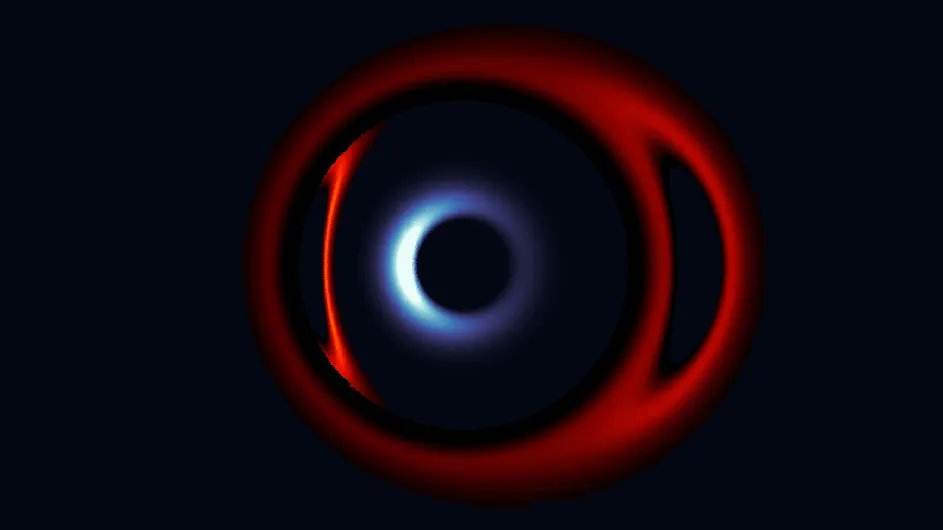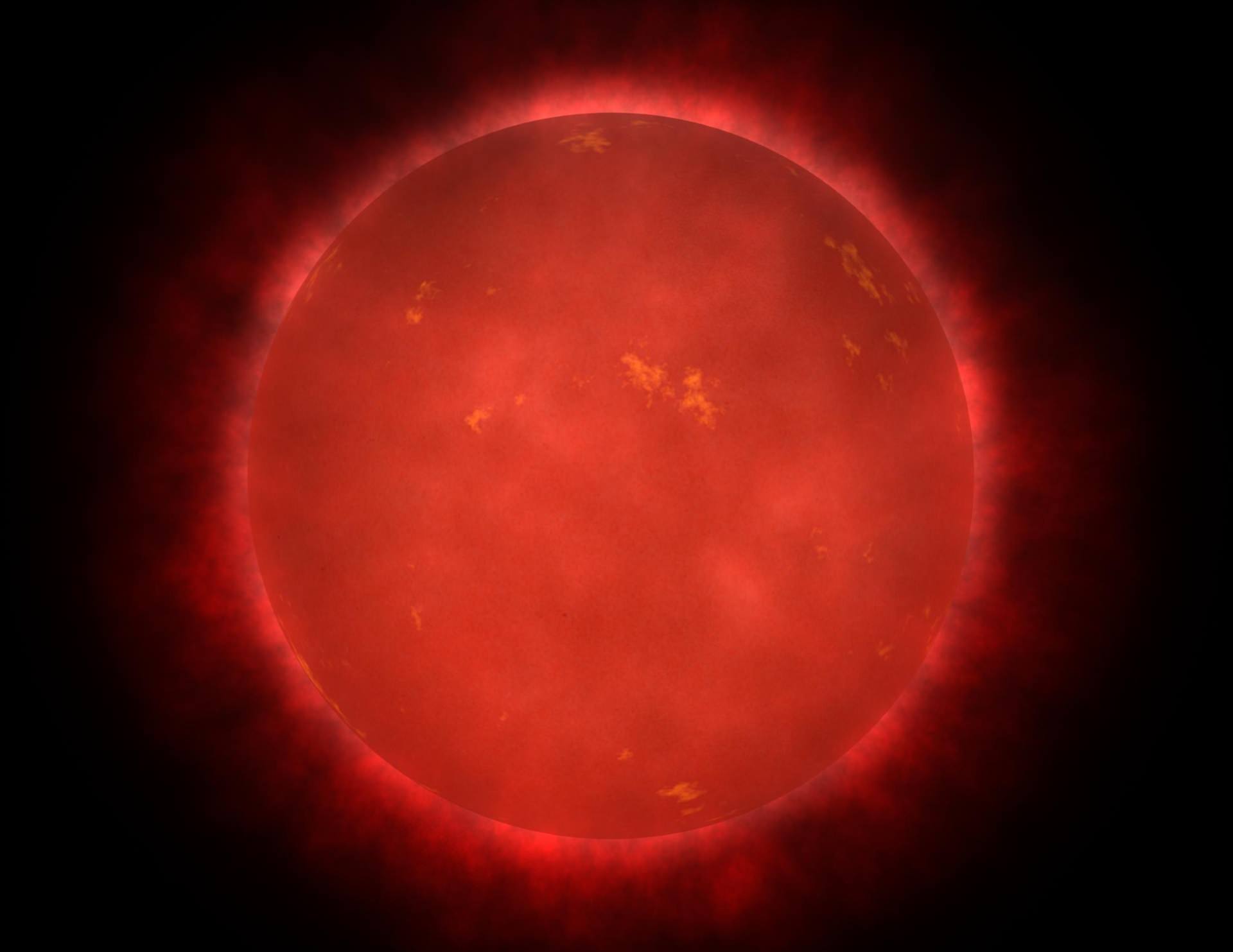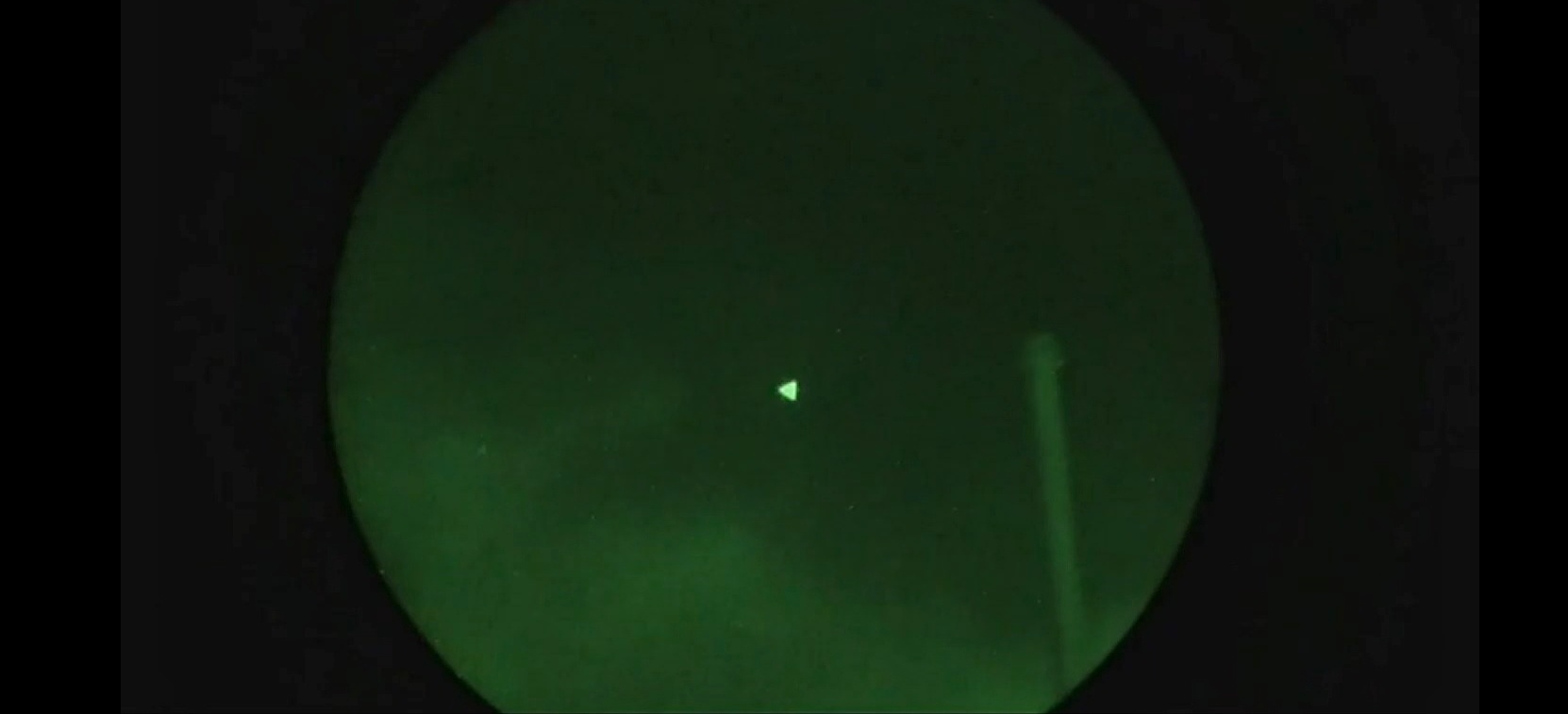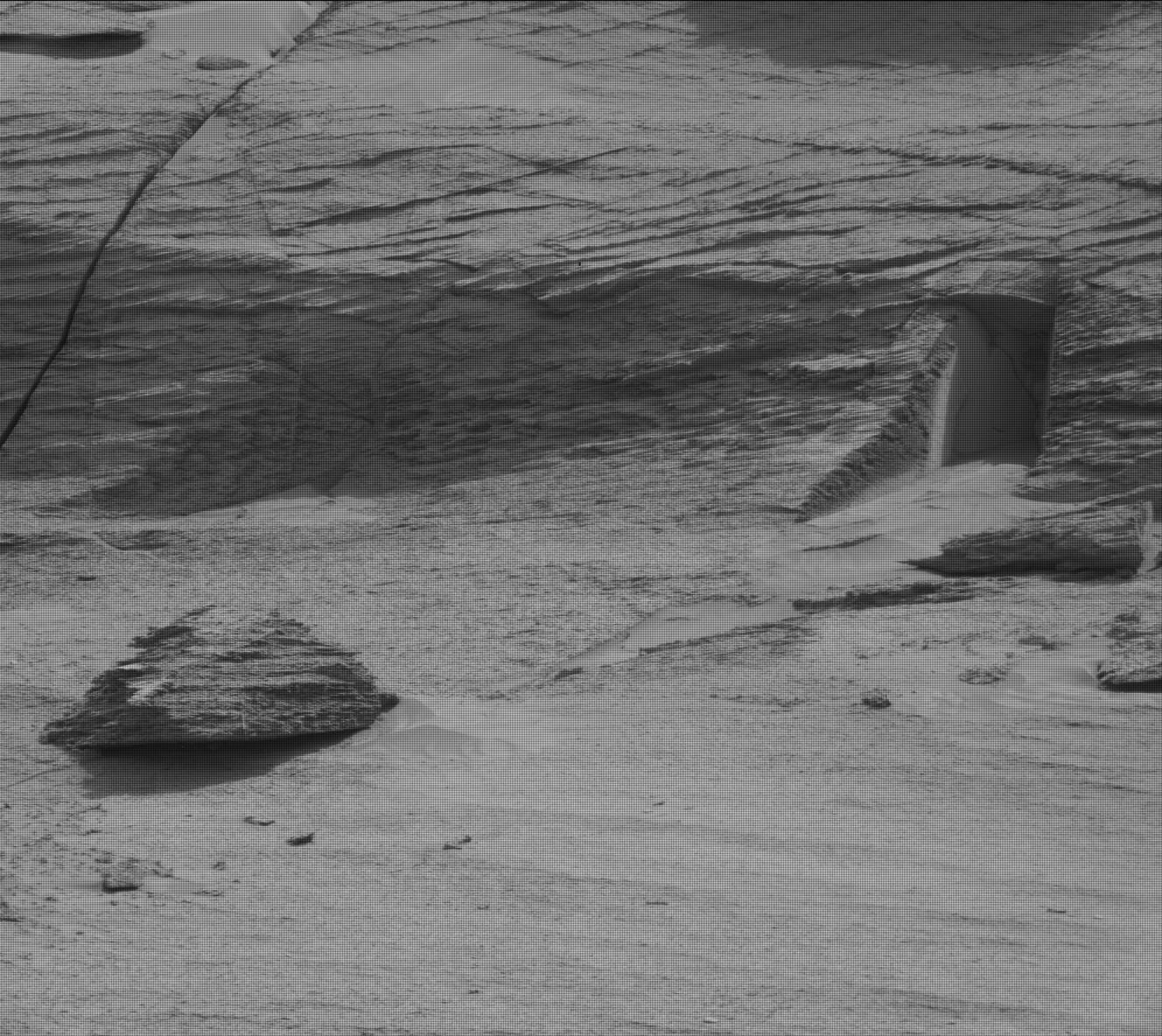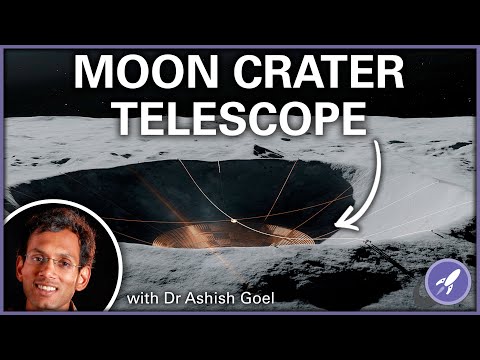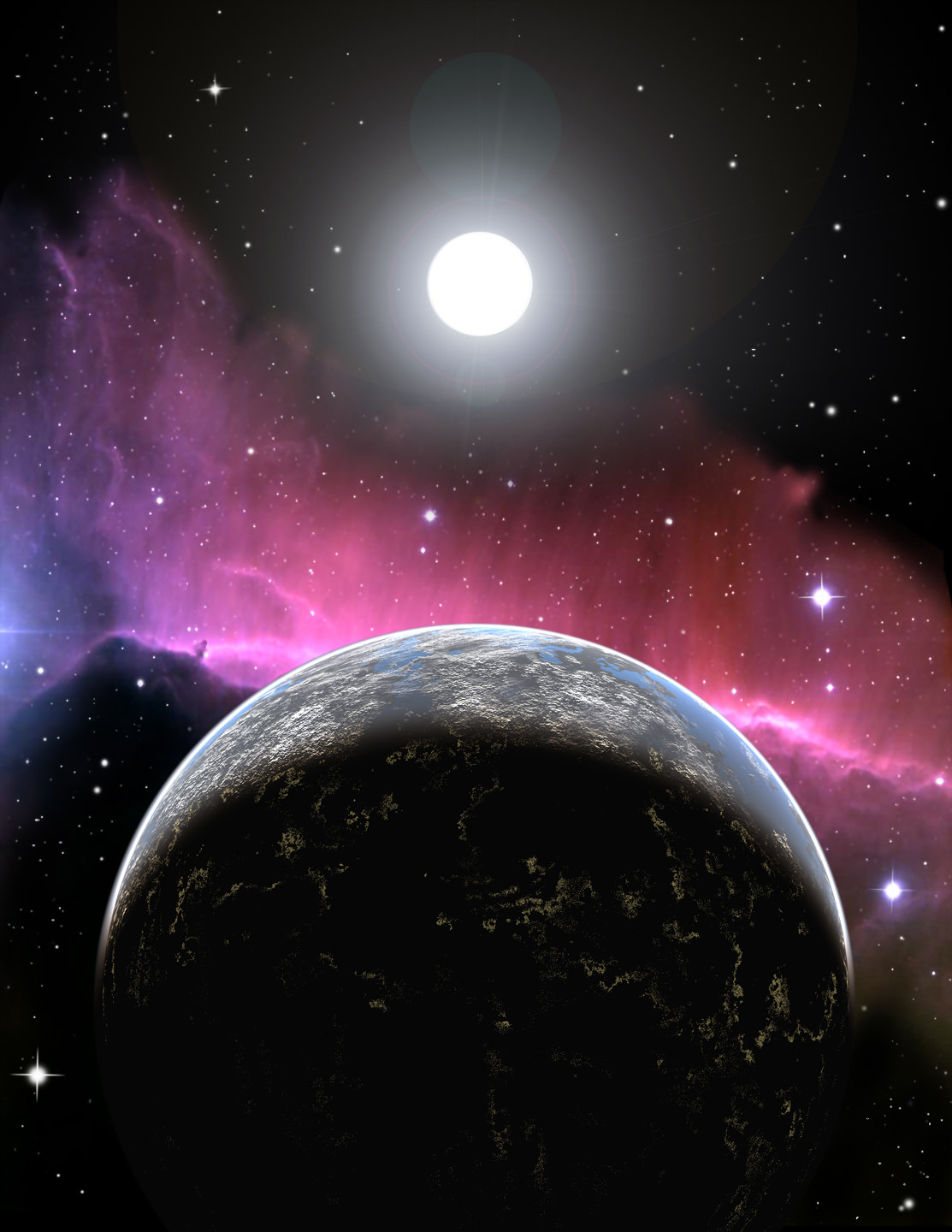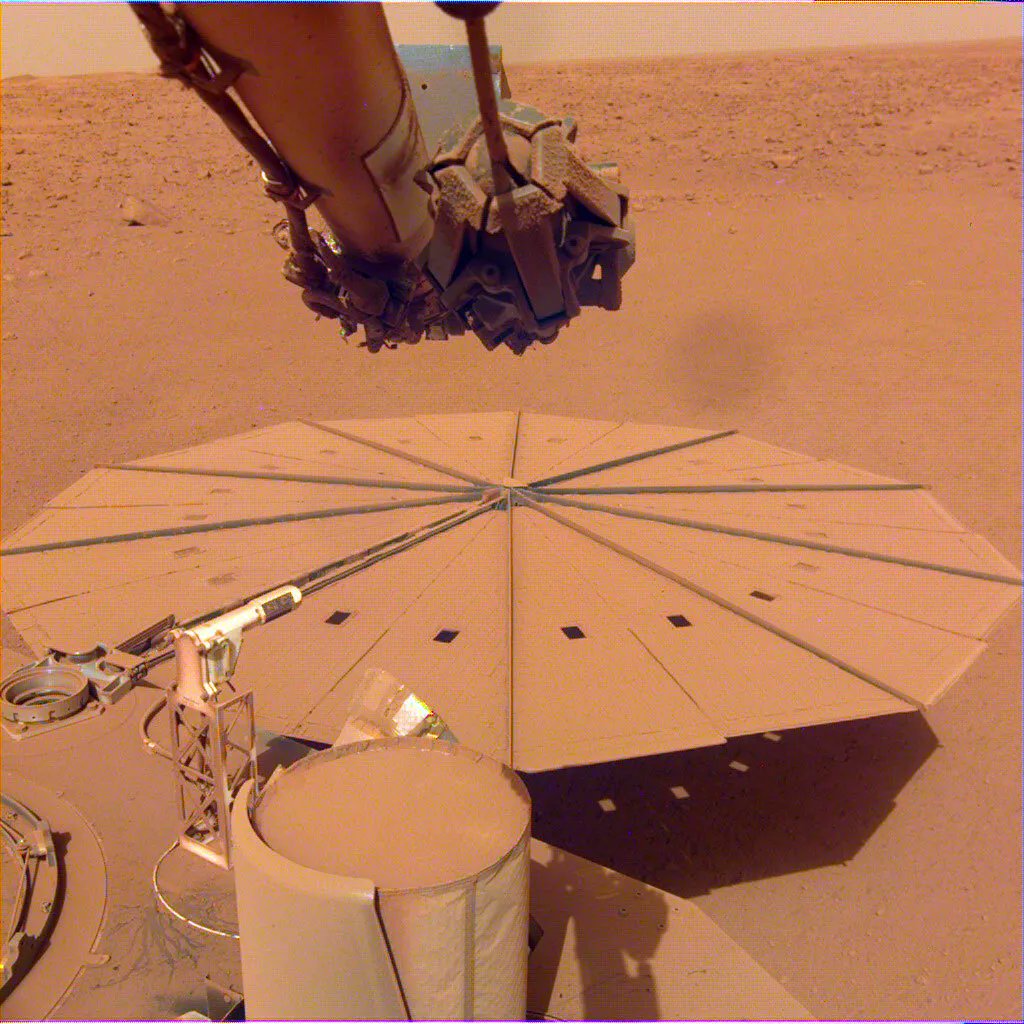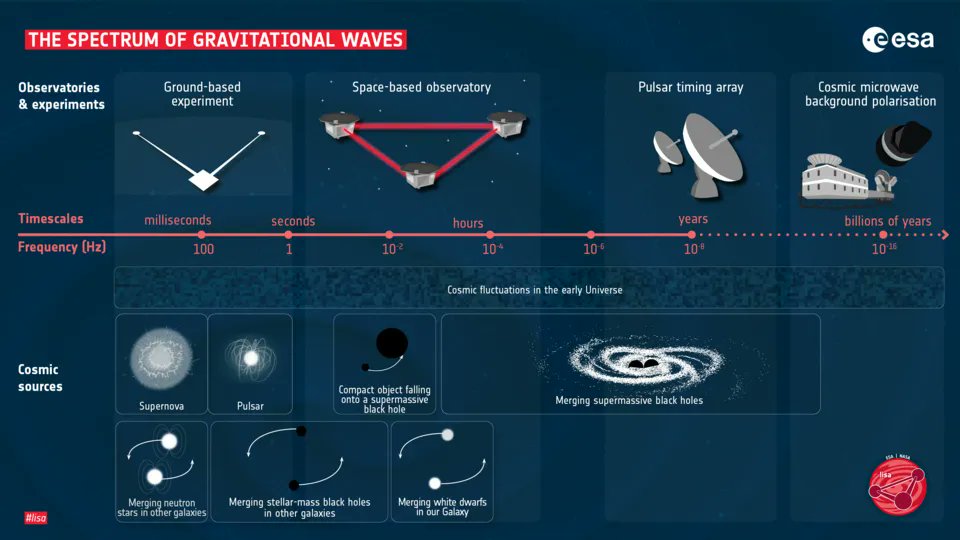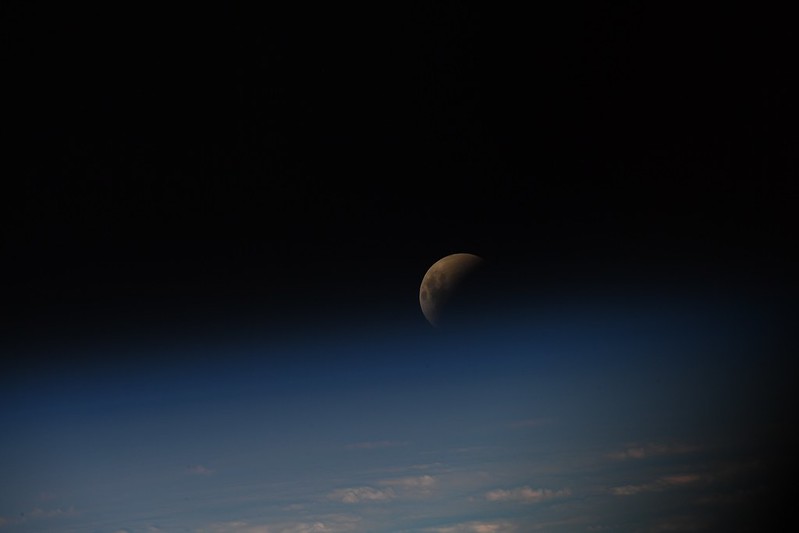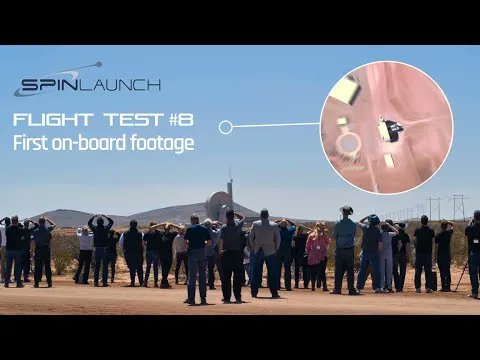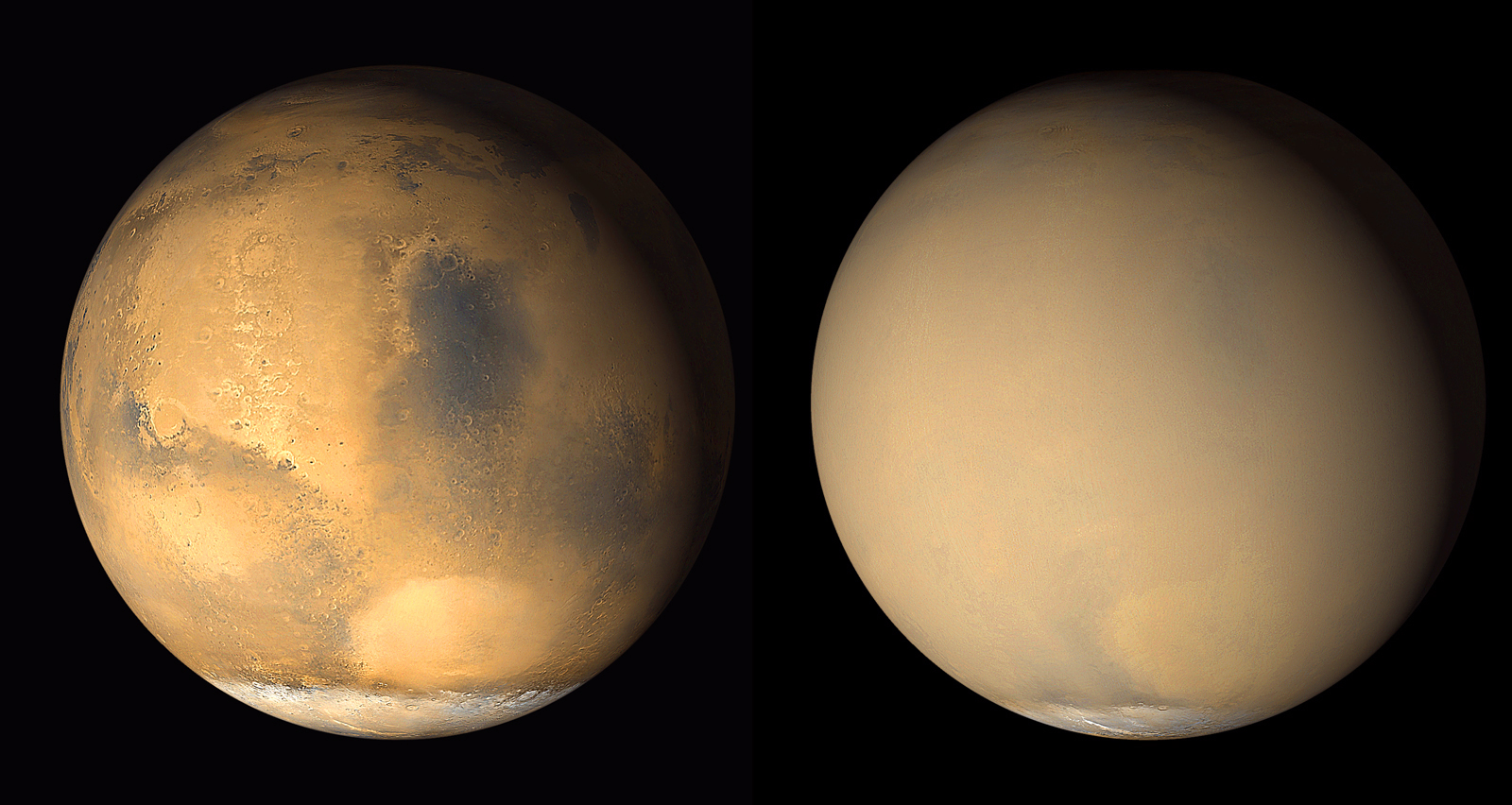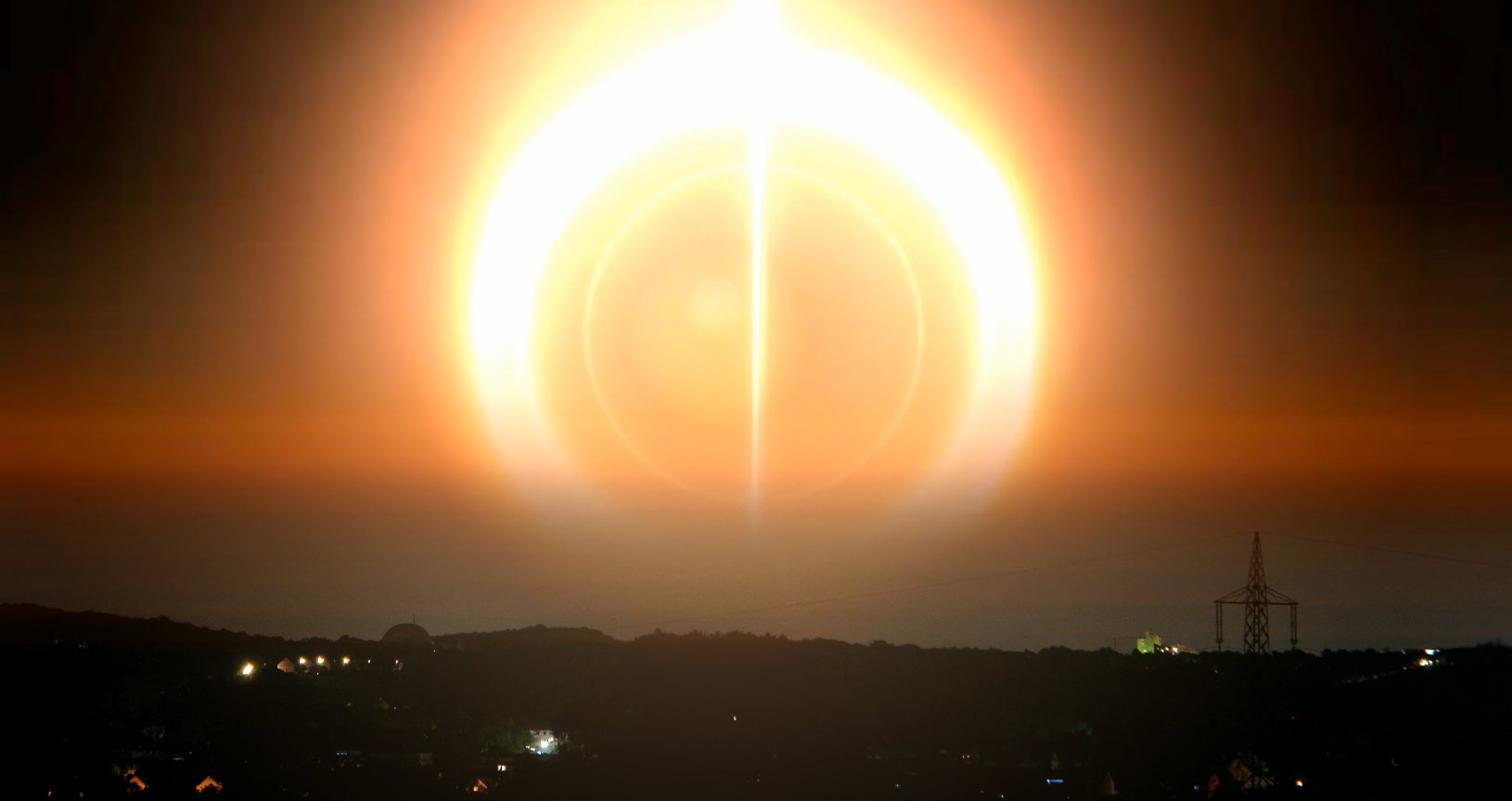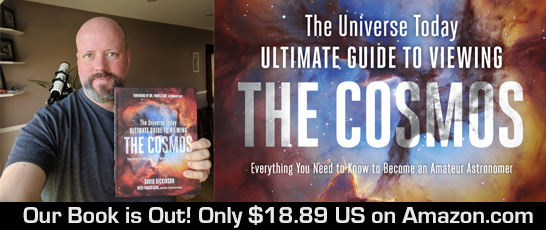I'm sure you've seen your share of meteor showers, where a meteor or two flashes in the sky every minute. But occasionally, there are meteor storms when the Earth passes through the dust trail of a comet or asteroid, and there can be thousands of meteors an hour, even once every second.
We May See a Tau Herculid Meteor Outburst on May 31st
It's possible that we're about to witness one of the greatest meteor storms in living memory, the Tau Herculids. These come from the tail of Comet 73P/Schwassmann-Wachmann 3, which broke up in 1995 and flared brighter by a factor of 400. On the night of May 30/31st, the Earth is expected to pass through the trail of debris where the comet broke apart, and our view could be intense.
Astronomers are conservatively estimating 1,400 meteors an hour, but I've heard estimates for 10,000 or even 100,000 meteors an hour during the height of the storm.
Of course, there's no guarantee. Astronomers have predicted meteor storms in the past, and they've been no-shows. I can't guarantee it will happen, but there's a chance. It's worth standing outside for a few hours, staring into the sky, hoping for a dazzling show.
Thanks!
Fraser Cain
Publisher
Universe Today
As always, if you have comments or questions, or suggestions on how I can improve this newsletter, please don't hesitate to reply this email or email me at [email protected].

This work is licensed under a Creative Commons Attribution 4.0 International License.
Patrons, don't forget to log in to Universe Today. That'll remove all the ads for you. Join the 1002 Patrons who get our videos early, see behind the scenes, and get no ads on Universe Today.
Cynicism VS Wisdom, How Big Do Black Holes Grow, Sky on Mars | Q&A 184
In this week's episode, I talk about how close to the Sun Parker Solar Probe can get, what is the smallest possible star that's turned into a red giant, why do I think aliens will need to adhere to the laws of physics, and more. Oh, and why am I so cynical?
Subscribe to our podcasts:
Universe Today Guide to Space Audio: iTunes - RSS - YouTube
Audio versions of all the media I upload to my YouTube channel, as well as bonus content, behind the scenes, interviews with Fraser and more
Astronomy Cast: iTunes - RSS - YouTube
Your weekly facts-based journey through the cosmos, which I co-host with astronomer Dr. Pamela Gay. We have episodes on every concept in space and astronomy, from black holes to the history of astronomy.
Weekly Space Hangout: iTunes - RSS - YouTube
A weekly round-up of all the breaking space news. Rocket launches, new discoveries from Hubble, and planetary science by a round table of scientists and space journalists.
Upcoming Shows:

A CubeSat is Flying to the Moon to Make Sure Lunar Gateway’s Orbit is Actually Stable
As part of its Artemis missions to return to the Moon, NASA will be building the Lunar Gateway. This space station will be in a "near rectilinear halo orbit," which means it'll orbit the Moon from pole to pole. It's a new orbit that's never been tried out before, so just to make sure it's stable, NASA is sending a CubeSat mission called CAPSTONE. This mission will launch at the end of May and then orbit the Moon for nine months performing observations and demonstrating that the orbit works as planned.
Read the full story by Matt Williams
Cosmic Rays can Help Keep the World's Clocks in Sync
Clocks are constantly getting more accurate, providing precise timing for satellite navigation, financial systems, and phone networks. Scientists are always looking for clever new ways to make clocks even more precise and robust so that different clocks worldwide can agree with each other about what time it is. A new idea could use cosmic rays, which strike the Earth and break up into smaller particles and strike a large area of the Earth. By detecting these sub-particles, clocks could be kept synchronized, even if they're below ground or deep underwater
Read the full story by Scott Alan Johnston
A Recently Discovered Double Binary System is Unstable. Stars Could Collide, Leading to a Supernova
You can find many examples of multiple star systems across the Milky Way. These can have two, three, or even as many as seven stars orbiting in a complex gravitational dance. The key is that the star systems are stable, with the stars orbiting one another for billions of years. Any unstable systems have merged or kicked stars out into the Milky Way. A star system has been found with four stars in two pairs. What's unusual about this system is that it doesn't seem stable over the long term. At some point, stars could collide with each other and detonate as supernovae.
Read the full story by Brian Koberlein
Going Back to Venus With Michael Amato
Michael Amato is an engineer at NASA and has been a member of the team behind NASA's DAVINCI spacecraft which will be launching to Venus in 2029. The spacecraft will be exploring the atmosphere of Venus with more clarity and detail than has ever been seen before, giving us a better sense about how the world became so different from Earth.
Scouring Through old Hubble Images Turned up 1,000 new Asteroids
After 30 years of observations, Hubble has captured many incredible images of the cosmos. But it has also photographed many asteroids accidentally during its observations. Astronomers recently dug through archived Hubble data from the last 20 years and turned up 1,700 asteroid trails. Of these, more than 1,000 had never been seen before. Over 11,000 citizen science volunteers helped train a machine-learning algorithm to find asteroids, which then scanned through 37,000 composite Hubble images to find the asteroids.
Read the full story by Evan Gough
Engineers Design an Electrical Microgrid for a Lunar Base
When the first lunar bases are built on the Moon, power is going to be a big problem. How do you generate the power and then share it around to the various buildings and laboratories on the Moon? Sandia National Laboratories is working on a microgrid technology that will allow small-scale independent electrical power systems, the perfect technology for the Moon. Their designs are being considered for the Artemis Base Camp, which will serve as a technology demonstrator and help validate an eventual Martian habitat.
Read the full story by Matt Williams
Astronomers Find a Star That Contains 65 Different Elements
Astronomers use a technique called spectroscopy to learn what stars are made of. They use a powerful telescope to break out the light of a star into a rainbow and then search for dark or bright lines in the spectrum that match known chemicals. Stars are mainly made of hydrogen and helium, but they can also be polluted with heavier elements like iron, gold, and even uranium. Astronomers were surprised to find a single star that contained 65 different elements - a new record.
Read the full story by Evan Gough
Did a 5th Giant Planet Mess up the Orbits of Jupiter, Saturn, Uranus and Neptune?
Astronomers are pretty sure that the positions of the giant planets in the Solar System shifted quite a bit billions of years ago. Jupiter and Saturn migrated outward from the Sun, while Uranus and Neptune switched places. What caused this early migration? A theory suggests that there was once a 5th giant planet in the Solar System, which interacted with the rest of the giants, causing them to migrate. This giant planet was ejected from the Solar System and is now roaming the Milky Way as a rogue planet.
Read the full story by Andy Tomaswick
Merging Supermassive Black Holes Gives us a New Way to Measure the Universe
We've all seen the images of supermassive black holes captured by the Event Horizon Telescope. So far, though, these have only shown off the black holes at the heart of galaxy M87 and the Milky Way. Astronomers have developed a technique that should allow more black holes to be revealed through their gravitational interactions. In binary black hole systems, one black hole passes in front of the other, acting as a gravitational lens and magnifying it beyond our current telescope capabilities. This could enable astronomers to image many more black holes in high resolution.
Read the full story by Matt Williams
Carbon-12 is an Essential Building Block for Life and Scientists Have Finally Figured Out How it Forms in Stars
Carl Sagan famously said, "you're made of star-stuff." All life on Earth is based on the element carbon-12, which we know was once formed in stars. But what is the exact recipe? Astrophysicists made a supercomputer simulation of the interior of stars, working out the exact recipe they use to manufacture carbon-12. Maybe one day, when the Sun dies and becomes a red giant, it'll make carbon-12 for the next generation of life in the Universe.
Read the full story by Carolyn Collins Petersen
Congressional UFO Hearing Brings a Few Answers and More Questions
For the first time in over 50 years, Congress conducted a public hearing into the nature of unidentified aerial phenomena (UAPs). Several military officers gave a testimony about the hundreds of objects observed over decades, saying they've been "frequent and continuing." Several of the objects have been explained, but others remain a mystery. There wasn't much support for the idea that aliens are visiting Earth; instead, there could be drones and other technology from other nations in US airspace.
Read the full story by Alan Boyle
No, This Isn’t a Doorway on Mars
I know this looks like a doorway on Mars, but it's not. It's just a rock. This image was taken by Curiosity as it was crawling up the slopes of Mount Sharp, following the history of water on Mars. This strange feature is just a fracture in ancient layers of sand that have hardened into rock over millions of years. And then the right shadow makes it look just like a doorway. We see familiar features on Mars all the time, but it's just our brains searching for recognizable objects.
Read the full story by Carolyn Collins Petersen
China has a new Human Lunar Space Program, With Plans for Landers, Orbiters, Rovers, and a Lunar Base
This week we learned that the Chinese National Space Agency has set up a new Crewed Lunar Program Office. They're in the process of developing the rockets and hardware that will enable human landings on the Moon as part of their increased space exploration efforts. We don't know precisely what they're planning to build, but the picture above is part of a mural in the head office, showing landers, rovers, space stations, and lunar bases. China keeps its plans pretty close to its chest, but I'll keep you updated when I learn anything new.
Read the full story by Matt Williams
The Lunar Crater Radio Telescope With Dr. Ashish Goel
Dr. Ashish Goel is a Research Technologist at the NASA Jet Propulsion Laboratory in the Robotic Surface Mobility group. He has helped develop the plans to build a giant radio telescope inside a crater on the Moon, providing a pristine view to the Universe, using the Moon to block Earth's radio transmissions.
Sending Humans to the Outer Solar System With Dr. Jonathan Jiang
Dr. Jonathan Jiang is the supervisor of the Aerosol and Cloud Group at NASA's Jet Propulsion Laboratory. Dr. Jiang has contributed over 220 peer-reviewed papers in a variety of journals. Most recently, he collaborated on a paper that investigates the future of human space exploration beyond the Moon and Mars, even to the outer Solar System.
Ceres Probably Formed Farther out in the Solar System and Migrated Inward
The dwarf planet Ceres was discovered in 1801, leading to astronomers finding many more asteroids in the region over time. NASA's Dawn mission visited Ceres and captured detailed images of its surface, revealing a much more dynamic world than astronomers were expecting. Scientists now think that Ceres formed much farther out in the Solar System, beyond the orbit of Saturn, and migrated inward over time. There were likely thousands of objects like Ceres, but they either crashed into planets or were kicked out of the Solar System entirely.
Read the full story by Evan Gough
Maybe We Don’t Hear From Aliens Because They Choose To Go Silent
The Fermi paradox continues to puzzle us. The Universe is big and old, and life should be everywhere. So where is everybody? A new research paper suggests intelligent civilizations realize that continued growth is unsustainable, and instead, they aim for a level of homeostasis and become undetectable. This gives the added benefit of being invisible to other civilizations, which could be hostile. Perhaps we'll eventually follow this middle path and go silent too.
Read the full story by Evan Gough
InSight is Losing Power, it Probably Will be Shut Down in a Few Months
This is a story you're becoming familiar with: the solar panels on a Martian spacecraft are getting covered with dust, starving it for power. In this case, it's NASA's InSight lander, listening to seismic activity inside Mars. After four years on Mars, its panels are down to 10% of their power generation, and NASA expects they'll have to shut the mission down by the end of the year. I know you've thought of ten ways NASA could keep dust off the landers, but I promise you, they've thought of it. The dust is electrostatically charged and clings to everything and can't be easily wiped away.
Read the full story by Nancy Atkinson
LISA has Passed a key Review Phase, it’s Time to Actually Design the Final Mission
The European Space Agency passed an important milestone this week in developing their Laser Interferometer Space Antenna (LISA) mission. Planned to launch in 2034, this mission will consist of three spacecraft flying 2.5 million kilometers apart, using lasers to detect gravitational waves. According to ESA, the mission passed the Feasibility Phase and entered the Refinement Phase. Next comes the Implementation Phase, where they build spacecraft and launch them to space.
Read the full story by Andy Tomaswick
Beaming Power in Space With Dr. Stephen Sweeney
Professor Stephen Sweeney works in the department of physics at the University of Surrey. He specializes in photonics, using lasers and photovoltaics for new types of communication, remote power transmission, and other concepts in space exploration.
The Lunar Eclipse, Seen From the International Space Station
Many of you watched the total lunar eclipse on May 15-16, but the astronauts onboard the International Space Station got a unique view of the event. ESA/Italian astronaut Samantha Cristoforetti captured a series of photos of the eclipse from the station and shared it on the web. She even managed to catch the Moon as it was in between the station's solar panels.
Read the full story by Nancy Atkinson
Plants can Grow in Lunar Regolith, but They’re not Happy About it
Have you ever wondered what would happen if you just planted some seeds in lunar dust and just watered them? What would happen? Researchers have finally done that, growing plants in actual lunar regolith using samples returned by the Apollo astronauts over 50 years ago. Amazingly, the seeds germinated and grew just like they were in volcanic soil. After day six, the plans in lunar soil were suffering, growing more slowly and with stunted roots. Detailed analysis showed that they were under stress.
Read the full story by Laurence Tognetti
Is This the Future of the Milky Way?
The Milky Way is a grand majestic spiral galaxy today, but in the far future, after it has merged with Andromeda and other dwarf galaxies in our vicinity, it'll probably look like this: an elliptical galaxy. This is galaxy NGC 474, located about 100 million light-years away from us. It's two and a half times larger than the Milky Way and no longer has a spiral structure. This is our future.
Read the full story by Carolyn Collins Petersen
Spinlaunch Hurled a Test Rocket Into the air. See What it Looked Like From the Payload’s Point of View
You've never seen a rocket launch like this. SpinLaunch is developing mass driver technology to hurl payloads into space using a catapult. They've built a prototype version capable of launching payloads about 8 km into the air, learning what will be needed to build a full-scale version. During a recent test, they attached a camera to the payload, letting you see the launch from the projectile's perspective.
Read the full story by Andy Tomaswick
Dust Storms on Mars Happen When the Planet Can’t Release its Heat Fast Enough
Although Mars has an incredibly thin atmosphere, it can still generate regional, seasonal dust storms. Sometimes, those storms can be so powerful they encompass the entire planet. What causes these dust storms? New research suggests that they could come from seasonal imbalances between how quickly Mars absorbs and emits solar energy. This could lead to a new understanding of the cycles that affect the Martian climate and global weather cycles.
Read the full story by Matt Williams
HUGE Upcoming Meteor Storm?, Starliner Success, Nova in Real Time | Space Bites
In this week's News Bites segment, I talk about the successful launch of the Boeing CST-100 Starliner, how astronomers watch a nova unfold in real time, the (not) door way on Mars, and the chance to see the greatest meteor storm in a generation.
Other Interesting Space Stuff
- Even if you can't see Auroras, you can Sometimes Hear Them. Here's What They Sound Like
- Dust Storms on Mars Happen When the Planet can't Release its Heat Fast Enough
- The Case is Building That Colliding Neutron Stars Create Magnetars
- The Tonga Eruption was as Powerful as Krakatoa
- Solar Orbiter's Pictures of the Sun are Every bit as Dramatic as you Were Hoping
- Forget About Mars, When Will Humans be Flying to Saturn?
- The Moon's Ancient Volcanoes Could Have Created ice Sheets Dozens of Meters Thick
- Voyager 1 Doesn't Know Where it is, Generating Random-Looking Telemetry Data
- Supernovae Were Discovered in all These Galaxies
- Spacesuits are Leaking Water and NASA is Holding off any Spacewalks Until They can Solve the Problem
- Starliner Launches Successfully, but two of its Thrusters Failed
- Lucy Turned Back to Watch the Recent Total Lunar Eclipse From 100 Million km Away
- ESA's Juice Mission is Fully Integrated and Ready for Testing. Soon it'll fly to Space on a Mission to Jupiter's Moons
- Does a "Mirror World of Particles" Explain the Crisis in Cosmology?
- Thanks to Gaia, Astronomers are Able to map out Nebulae in 3D
- Compare Sand Dunes Across the Solar System, From Venus to Pluto
Amazing Astrophotography on @universetoday
Black Hole Sun. Arndt Stelter Imagines Replacing the Sun with SgrA*
Instead of a familiar sunrise, imagine seeing the supermassive black hole at the heart of the Milky Way rise above the horizon in the morning. The image was created by Arndt Stelter, imagining our view of a black hole with 4.1 million times the mass of the Sun, extending out to the orbit of Mercury. Needless to say, it would be our last day on Earth; and the last day for Earth.
We have featured thousands of astrophotographers on our Instagram page, which has more than 200,000 followers. Want to do a takeover? Use the hashtag #universetoday and I'll check out your photos.
Find your way across the night sky. Choose a variety of astronomy gear. Follow the Moon and the planets. Find deep sky objects across the seasons in both hemispheres. Observe comets, asteroids, satellites and space stations. Learn to do astrophotography.
Get it on Amazon for only $18.89. Here are some other options.
Click here to Unsubscribe from this list.
Universe Today - #3400 333 Hunt Road - Courtenay, BC V9N 3R6 - Canada

